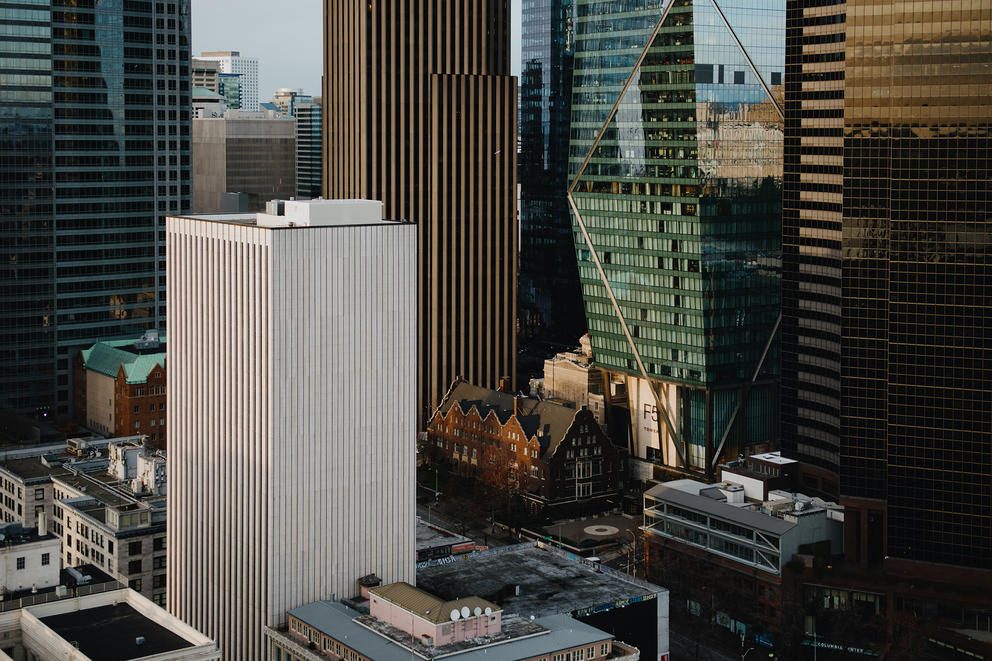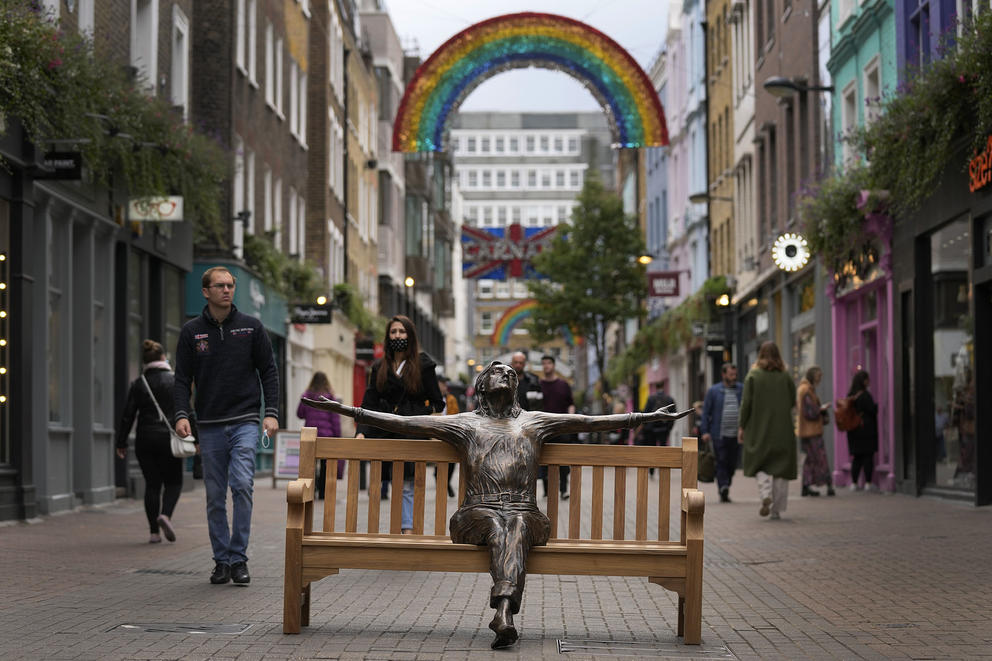For many, the answer is more residents living downtown and more tourists coming to visit. In a recent article on the future of Downtown, elected officials, business leaders, real estate insiders and others told Crosscut they want to remake the central business district into a mixed-use neighborhood with less reliance on offices and more housing, more neighborhood-scale businesses and a more inviting streetscape.
At the end of the article, we asked Crosscut readers what they want to see happen: What would it take to get them to live in the neighborhood? What kind of place do they want it to be? And what sort of ambitious, fantasy transformations do they hope to see come down the line?
The 28 readers who responded said they want a neighborhood designed for people (and not just rich people). They want plenty of space for walking, safe bike infrastructure to ride in and far fewer cars. They want cafes and parklets for whiling away an evening. They want arts and music and cultural anchors. They want it to be affordable.
Here are a few key themes Crosscut readers want to see in their ideal Downtown of the future.
Put people first, not cars
Walkability reigns supreme in our readers’ vision of downtown. Half the respondents said they want to see vastly more pedestrian space with less of the neighborhood dedicated to driving and parking. Several said they’d like to see few to no cars Downtown.
Lynn Curtis pictures sections of Downtown centered on car-free zones. “I'd like to see at least two new residential/mixed use areas that are car free at their center to create a sense of community,” she wrote. “I'd like to see a return of the mom-and-pop businesses that define a great neighborhood (think Fremont's [central business district], Pike/Pine, Columbia City, the Junction in West Seattle).”
Louie Zibilli has a concrete idea for reshaping transportation. He said there should be limited access for cars with priority for bicycles and electric-powered transit. He wants First and Third Avenues to be “park-like malls” meant primarily for pedestrians, but with a trolley running down the center. Second and Fourth Avenues would be dedicated to buses, while cars could still use Fifth and Sixth.
In short, he said he pictures a Downtown “more like Amsterdam than Seattle.”
Zibilli is realistic (or perhaps fatalistic) about how such a transformation could get bogged down in Seattle process, however. “It would probably take longer because of our handwringing culture,” he wrote. “Too bad most of us won’t live to see it.”
Alec Georgoff wants bike lanes on every street, with several streets entirely closed to cars. “[Downtown] will stop being a giant freeway on-ramp for suburban commuters,” he wrote.
Expand transit (and maybe make it free)
Not everyone has the mobility to get around a large neighborhood by walking or rolling. Many readers want to see transit expanded Downtown. Some called for it to be free in the Downtown core, as it was for nearly 40 years until the “Free Ride Zone” program ended in 2012.
A few readers said Seattle should finish the long-planned First Ave Streetcar to connect the Pioneer Square end of the First Hill Streetcar with the Westlake Streetcar line. The plan has been on ice since 2018, drawing scrutiny from the feds in recent months since Seattle has millions in federal transit grants meant to pay for that project.
Aaron Jocelyn thinks the city should be even more ambitious about expanding its streetcar network.
“Completely pedestrianize Pike and Pine from the [Pike Place] Market to Madison [Street] and run a streetcar up Pike and back down Pine to connect Capitol Hill to Downtown and the waterfront,” Jocelyn wrote. “Restore the First Ave streetcar service from Georgetown to Golden Gardens.”
Give people places to go and things to do
Of course, the vision for Downtown is not just to make it easier for people to walk around for the sake of walking around. Crosscut readers want a Downtown filled with restaurants, cafes and outdoor dining. There would be small grocery stores and bodegas to serve residents. They want buskers and music venues and street art. They want parklets and plazas. They want a neighborhood that attracts people to give it life outside of 9-to-5 business hours.
“After work, one could walk around your neighborhood to get groceries, dine out, or get to-go food. A nice evening could be spent at a theater, movies, checking out [Seattle Art Museum] or galleries along with one’s friends and neighbors,” wrote Adam Colby. “Walking the street, it would feel like a place where all kinds of people live, work and play. The neighborhoods would feel like a place to be, not a place to go through quickly on your way to somewhere. It would feel like a home.”
Make Downtown egalitarian and green
One thing most Crosscut readers agreed on is that Downtown should neither be a place for only the rich to live nor only corporate retailers and businesses to operate.
Jim Little wants to see a mix of upscale and affordable housing along with a K-8 school for the families who might choose to live there. He wrote that affordable housing should be targeted to “essential workers” such as teachers, healthcare workers, police and electricians to reduce their commutes into the city.
One anonymous reader wrote that if the rents were affordable and included sufficient storage space, soundproofing and rooftop open space, they would like to live Downtown.
Similarly, readers don’t want a Downtown filled only with chain retailers and restaurants that can afford expensive commercial rents. To help ensure that, Lynn Curtis thinks, “We will need to provide incentives to landlords to make ground floor retail in the taller buildings affordable.”
Readers also want a greener Downtown, both in a natural and infrastructure sense.
Many called for more street trees, natural park spaces, rooftop gardens and P-Patch public gardens to bring nature into the Downtown core.
Others want to ensure a future Downtown is a paragon of sustainability.
“There should be roof-top gardens, solar and wind energy generation with heat capturing tech to power structures,” wrote an anonymous Crosscut reader. “The buildings are fossil-fuel free, and contain a mixture of uses … Few to zero cars, just public transit, bikes, scooters, and pedestrians. There will be more greenery on the streets, I-5 has multiple lids, the stormwater system is aided via increased permeable surfaces. Water and air are cleaner, with people feeling empowered and energized by the space.”




